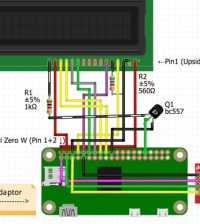- makeITcircular 2024 content launched – Part of Maker Faire Rome 2024Posted 2 weeks ago
- Application For Maker Faire Rome 2024: Deadline June 20thPosted 2 months ago
- Building a 3D Digital Clock with ArduinoPosted 7 months ago
- Creating a controller for Minecraft with realistic body movements using ArduinoPosted 7 months ago
- Snowflake with ArduinoPosted 8 months ago
- Holographic Christmas TreePosted 8 months ago
- Segstick: Build Your Own Self-Balancing Vehicle in Just 2 Days with ArduinoPosted 8 months ago
- ZSWatch: An Open-Source Smartwatch Project Based on the Zephyr Operating SystemPosted 9 months ago
- What is IoT and which devices to usePosted 9 months ago
- Maker Faire Rome Unveils Thrilling “Padel Smash Future” Pavilion for Sports EnthusiastsPosted 10 months ago
Meet HU-GO, the Open Source DIY Low-Cost Wheelchair with 3D Printed Parts

One of the noblest uses of knowledge and especially the open source one is the willingness to apply it for a distributed social benefit, like in this case:
Most able-bodied people don’t really understand exactly how expensive it is to be disabled in a world built for people who are not. I have heard several people, after reading an article about e-NABLE, comment about how shocked that they are at the cost of traditional prostheses. I would imagine that the same sticker shock would apply to those who have never had to purchase a wheelchair. On the low end, wheelchairs still cost several hundred dollars, but they can reach costs up into the thousands. And electric powered chairs are even more expensive, with prices often doubling the cost of their manual counterparts. That is hard for most people to afford in a developed country like the United States, but would be nearly impossible for a poor person in developing countries.
It was the image of poor people in these developing countries being reduced to being pulled around on carts that inspired architect Hugo Riveros to design a low-cost, easy-to-assemble wheelchair that he calls HU-GO. Because of its size, something like an e-NABLE hand can be mostly 3D printed, but an assistive device like a wheelchair is far too large and complicated to print entirely
You can download all of the files over on Thingiverse, and Riveros has included detailed assembly instructions, including step by step photographs. If you want to help Riveros continue to develop the HU-GO he has set up a PayPal account to accept donations
Source: Meet HU-GO, the Open Source DIY Low-Cost Wheelchair with 3D Printed Parts














